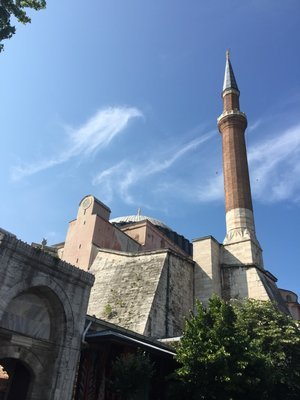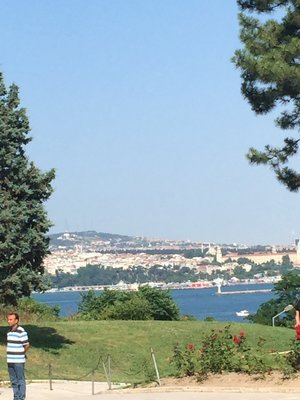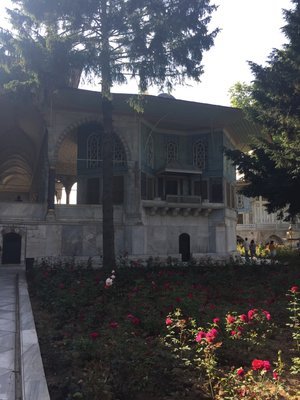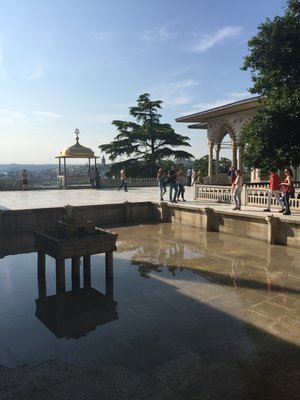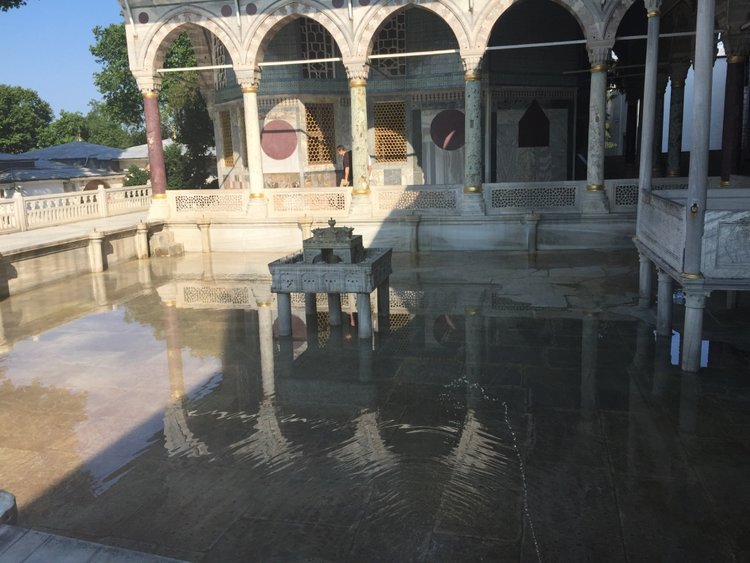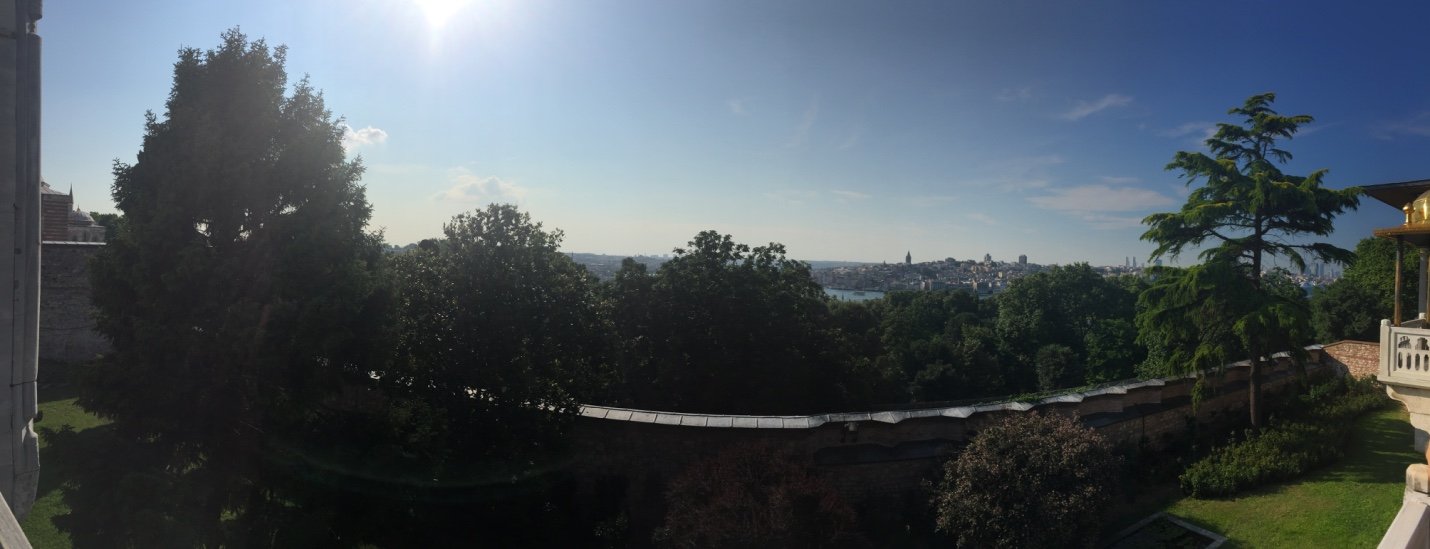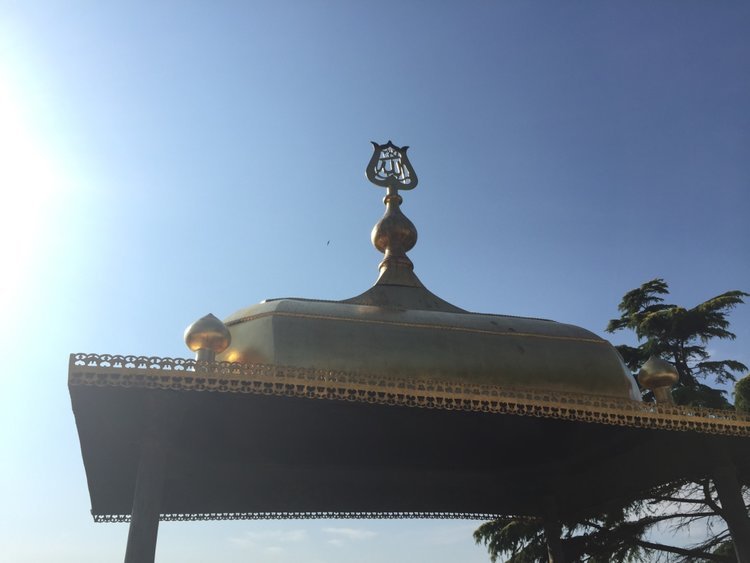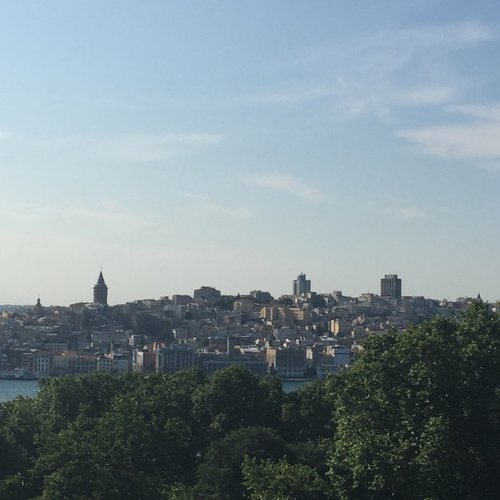Cruise Edition: Istanbul, Turkey
Note: This post has been updated on May 10, 2022.
Writer’s Note: This was part of a 7-day Mediterranean cruise on Princess, which means this post is limited to what I saw in Istanbul on that day.
Our two-week family vacation began in Istanbul - a city of great divide, 23 million people, and more traffic than on an L.A. freeway. Like any other ancient city, the bones of its history outshine even the most modern of architecture - the lush landscaping creating a seam that brings it together.
When my family and I landed at Istanbul's airport and drove off in our taxis to the hotel, I couldn't help but notice the ancient walls, lined with gardens, flowers, and lush trees. With so much conflict still in Istanbul today, the Turks still take pride in the beauty they have created around them.
My family and I stayed at the Radisson Blu the night before the cruise - a chic hotel right along the Bosphorus. It's in an interesting section of town that not only houses some great hotels but also many areas that are "to be desired". It feels as though you are in the heart of the city where their social and religious caste systems collide.
What to do with 20 hours
Topkapi
If there is one thing you get to do in Instanbul, most would say “The Blue Mosque”, but I say Topkapi. The palace, once home to Sultan Abdulmecid, is located at the Istanbul Peninsula between Sea of Marmara, Bosphorus and the Golden Horn.
After Sultan Mehmed II's conquest of Constantinople (known since 1930 in English as Istanbul) in 1453, the Great Palace of Constantinople was largely in ruins. He ordered that construction of Topkapi Palace begin in 1459 and established the basic layout of the palace.
His private quarters would be located at the highest point of the promontory. Various buildings and pavilions surrounded the innermost core and winded down the promontory towards the shores of the Bosphorus. The entire complex was surrounded by high walls, some of which date back to the Byzantine acropolis. This basic layout governed the pattern of future renovations and extensions.
Also, they were governed by a strict, almost ceremonial-like daily life, ensuring imperial seclusion from the rest of world. One of the central tenets was the observation of silence in the inner courtyards. The principle of imperial seclusion is a tradition that was codified by Mehmed II in 1477 and 1481 in the Kanunname Code, which regulated the rank order of court officials, the administrative hierarchy, and protocol matters. This principle of increased seclusion over time was reflected in the construction style and arrangements of various halls and buildings. The architects had to ensure that even within the palace, the sultan and his family could enjoy a maximum of privacy and discretion, making use of grilled windows and building secret passageways.
The palace was significantly expanded between 1520 and 1560, during the reign of Suleyman the Magnificent, which included the harem, baths, the Privy Chamber, and various shoreline pavilions.. The Ottoman Empire had expanded rapidly and Suleyman wanted his residence to reflect its growing power.
My Experience
Its sweeping views were a peaceful sight - traffic seeming to be miles away with not a horn to be heard. Its grounds were just as breathtaking - each building on the property ornately decorated to demonstrate their power and wealth. From the bris room (yes there is such a thing), to the turban room, and the harem room, not one corner went untouched without an intricately hand-painted tile or 14K gold molding.
Since we got to the palace a bit late in the day, we were only able to see this and nothing else.
Nightlife
If there is one thing I love about a European city, it's what happens when the sun goes down and 10pm hits.
The House CafE
I was lucky to have a Turkish friend in town that could join us for dinner and some of us for drinks later, giving us a great snapshot of what a typical Friday night is like. To make things simple, we walked the half block to The House Cafe from our hotel. It's a huge outdoor, trendy restaurant that overlooks the Bosphorus. With house music playing, wine flowing, the sun going down, and a slight breeze in the air, what was a crazy day, turned into the perfect night.
Note: that everything on the menu is good there. I'm not a fan of seafood but my friend's Sea Bass salad was incredible. (Sea Bass is very popular in Istanbul, as they catch it right from the Bosphorus.)
Lucca
After dinner, most of my family retired back to the hotel while a few of us stayed out. My friend first took us to Lucca - a trendy restaurant/bar that the "who's who" of Istanbul society goes to. It's there I got my first glimpse of the "other side" of the city. Just like any young, urban culture, traditional societal rules need not apply. Everyone is dressed in trendy, nightlife clothing with the likes of Tom Ford, Chanel, Louis Vuitton, and Prada spotted in every which direction. Young couples were openly showing affection for one another while others were having fun conversation, sipping impeccably-made drinks. It's the type of place you start your night at before moving onto the "main events".
Sunset Grill & Bar
Our next (and final) stop of the evening was to the incredibly fabulous and upscale Sunset Grill & Bar, overlooking the Bosphorus and much of Istanbul. The experience is an unparalleled treat to the senses. Upon arriving to the outdoor bar area, overlooking the Istanbul skyline, you realize you are surrounded by beauty - beautiful people, perfect house music, incredible lighting and decor, and of course, perfect cocktails. It's something myself and my friends crave in nightlife. The wine and cocktails are flowing, laughter is abundant, and so is the energy. At 1am, while everyone was just getting started, we had to head back, to be well-rested for the start of the rest of our trip.
How to get around
Accounting for traffic - If you have never been to Istanbul, here's your best tip: To go 6 miles, leave two hours ahead - particularly from 2pm-on.
Build in time to look for a taxi/wait for a ride share - You will spend least 30 minutes looking for a taxi/waiting for a ride share. I say this because you may have to find one that will take you where you need to go, at a fair price (aka will haggle). For example, one taxi driver might accept 25 Turkish Lira while the other might insist on 75 Turkish Lira for going the same distance - be smart.
Taxis will feel unsafe - In the short 36 hours I had been there, we had two drivers threaten us, one get rear-ended, and one get so lost that he had to use my phone to call another driver, to find out how to get to our destination (he had lied on being lost and was looking for more money). You may be better off getting a ride share.
Traveling tips
How women should dress for tourism - When visiting historic/religious sites, women should wear a maxi dress, skirt, or long pants (NO SPANDEX). Always carry a cardigan that covers your shoulders and a head scarf. Unfortunately, my sister didn’t abide by this rule and was almost pulled out of a taxi cab in Old Istanbul by a Turkish man, thinking she was a prostitute (no, I am not joking).
How women should dress for nightlife - Nightlife is very different there with women dressed far more scantily clad. High-end shoes, accessories, and dresses are the norm, as are outfits you’d usually wear out for a night of clubbing.
Be aware of your surroundings - Pick-pocketers are everywhere, so be cautious and aware.
You will eat later - Like any other European city, meals are much later. An early dinner is at 9pm with the average being around 11pm. Nightlife goes all night.
Currency - Most places accept both Turkish Lira and Euros.
Alcohol purchases - There is a 100% tax on non-Turkish alcohol. We stuck with mainly Turkish white wine, which was amazing. It was about 120 Turkish Lira a bottle ($3.80 USD)!

